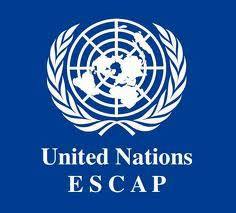
(File photo)
Bangkok -- The trade outlook for the Asia-Pacific region appears positive this year, but the UN predicts uncertainties in 2018.
An annual United Nations Economic and Social Commission for Asia and the Pacific (ESCAP) trade and investment report, "Channeling Trade and Investment into Sustainable Development," said cutting trade costs and deepening regional cooperation are key to ensuring that the benefits of trade and investment can be shared across the region. Such a policy mix may result in $100 billion more exports for the region a year. Export growth is forecast at 4.5 per cent for 2017 and foreign direct investment is also expected to rebound this year, building upon fast growth in green investments in 2016 and continued investment liberalization, the report said.
UN Undersecretary-General and ESCAP Executive Secretary Dr. Shamshad Akhtar said an integrated approach to trade and investment liberalization is essential to achieving the Sustainable Development Goals (SDGs) in the region, but that SDG-targeted trade and investment policies and complementary domestic policies need to mitigate the social and environmental impact of trade and investment.
"The impact analysis of different policy scenarios featured in the report make it clear that SDGs cannot be achieved through protectionist policies," Dr Akhtar said. "What we need is targeted trade and investment liberalization policies that are more inclusive and mindful of the social and environmental dimensions of sustainable development."
The report noted that the expected exports growth of developing Asia-Pacific economies is 4.8 per cent while that of developed countries in the region is 3.3 per cent. Countries previously affected by the slowdown in global value chains, such as South Korea and the Philippines, are expected to enjoy significantly better trade prospects this year. At the same time, the rising prices of industrial commodities and fuel will contribute to dynamic growth for commodity exporters such as Australia, India, Indonesia, Iran, Kazakhstan, among others.
The study also predicts that export volume of the Asia-Pacific region in 2018 will grow more modestly than in 2017 at 3.5 per cent, while imports will increase by less than 3 per cent. Export and import prices, especially commodity prices, are not likely to increase, and may trend downward due to the potential slowdown in investments and consumption precipitated by rising uncertainties. The sluggish prices will cause trade value in 2018 to increase much slower than in 2017. At the same time, deepening uncertainties may also affect the extent of investment liberalization which has been increasing GDP by $19.5 billion a year, while lowering inequality in the region by 0.02 per cent per year.
The report proposes a policy framework to further enhance the contributions of international trade and foreign direct investment to sustainable development. It also provides estimates of the economic, social and environmental impact of alternative regional trade and investment liberalization policy scenarios, when implemented alone or in conjunction with selected domestic social and environmental policies.
A strong message from the report is that integrated liberalization increases trade and GDP significantly more than any of the other stand-alone policy changes. This integrated approach facilitates the participation of countries in global value chains and significantly increases the competitiveness of regional exports. This integrated liberalization scenario provides strong evidence of the important synergies that can be achieved by liberalizing and facilitating trade and investment.


